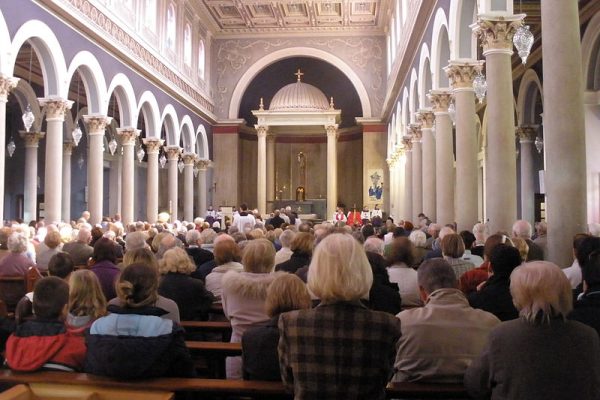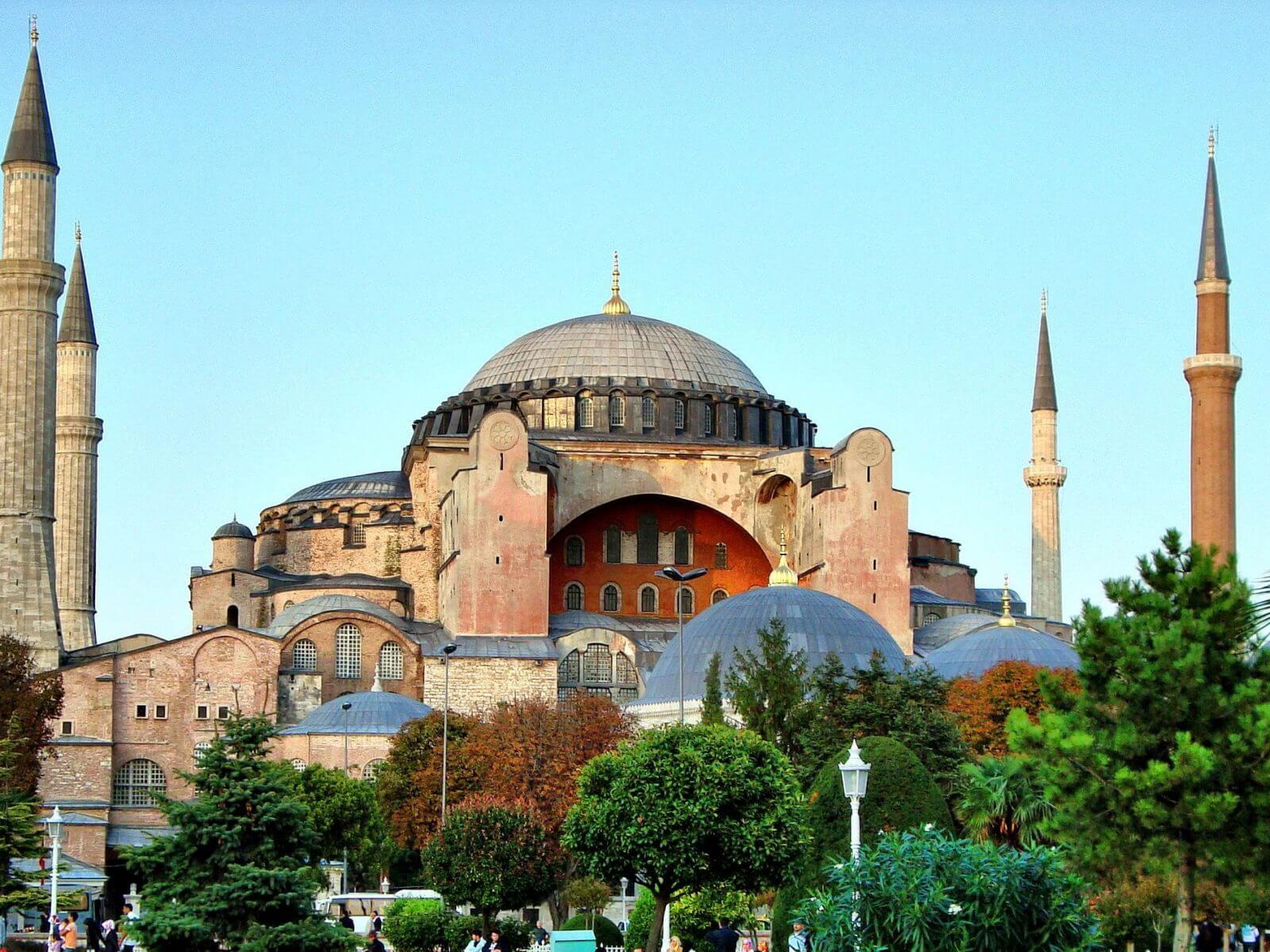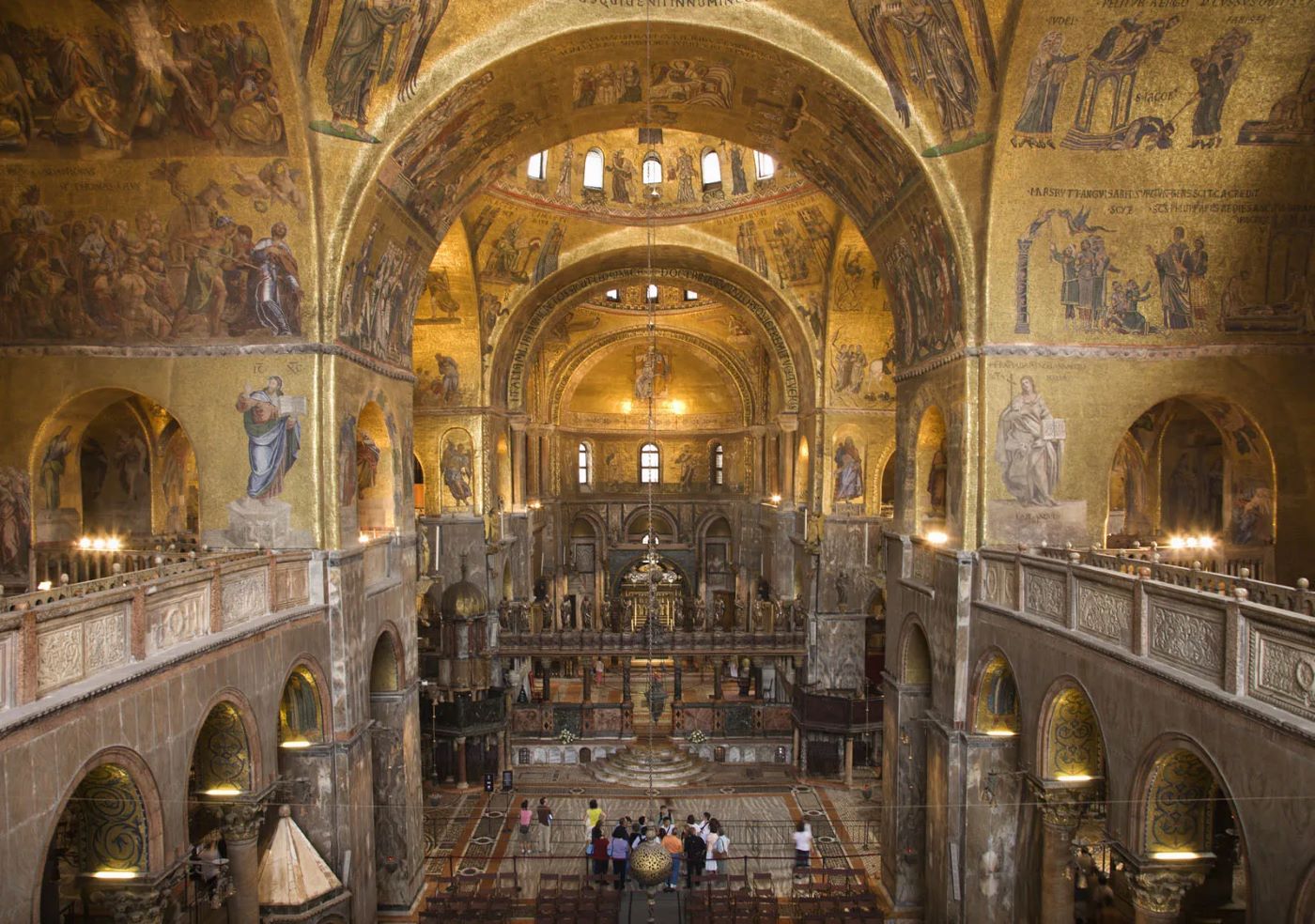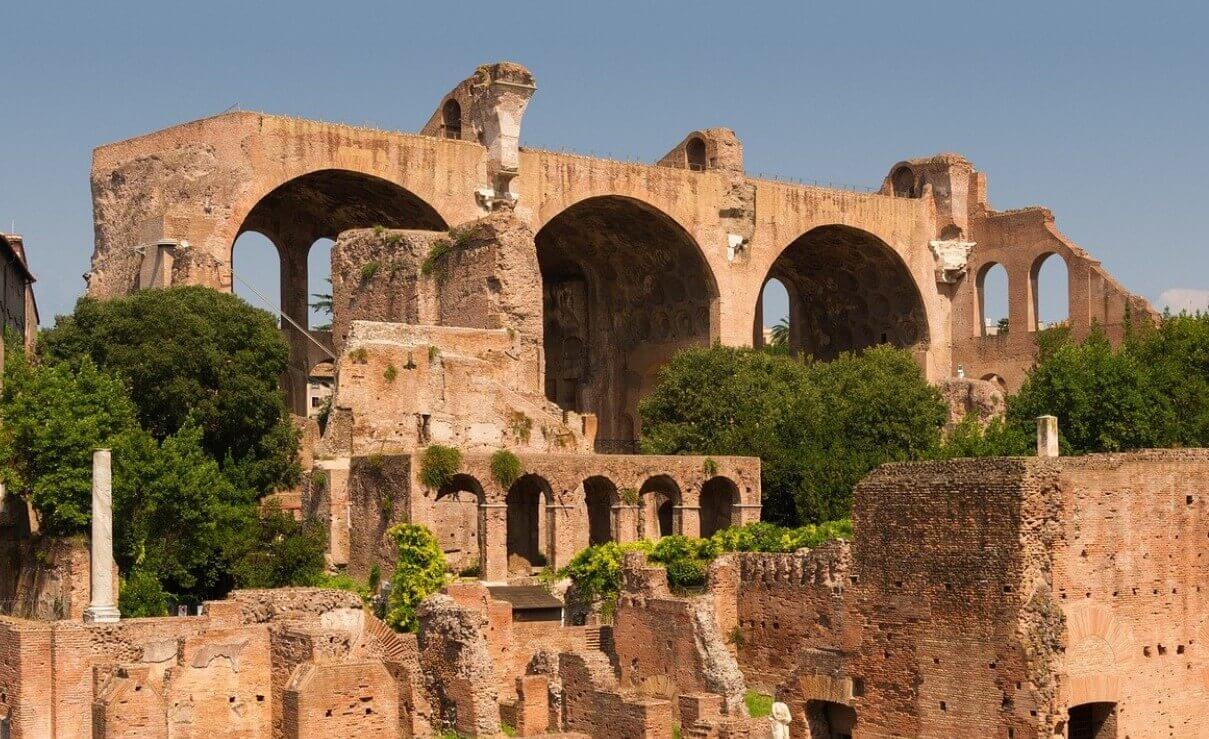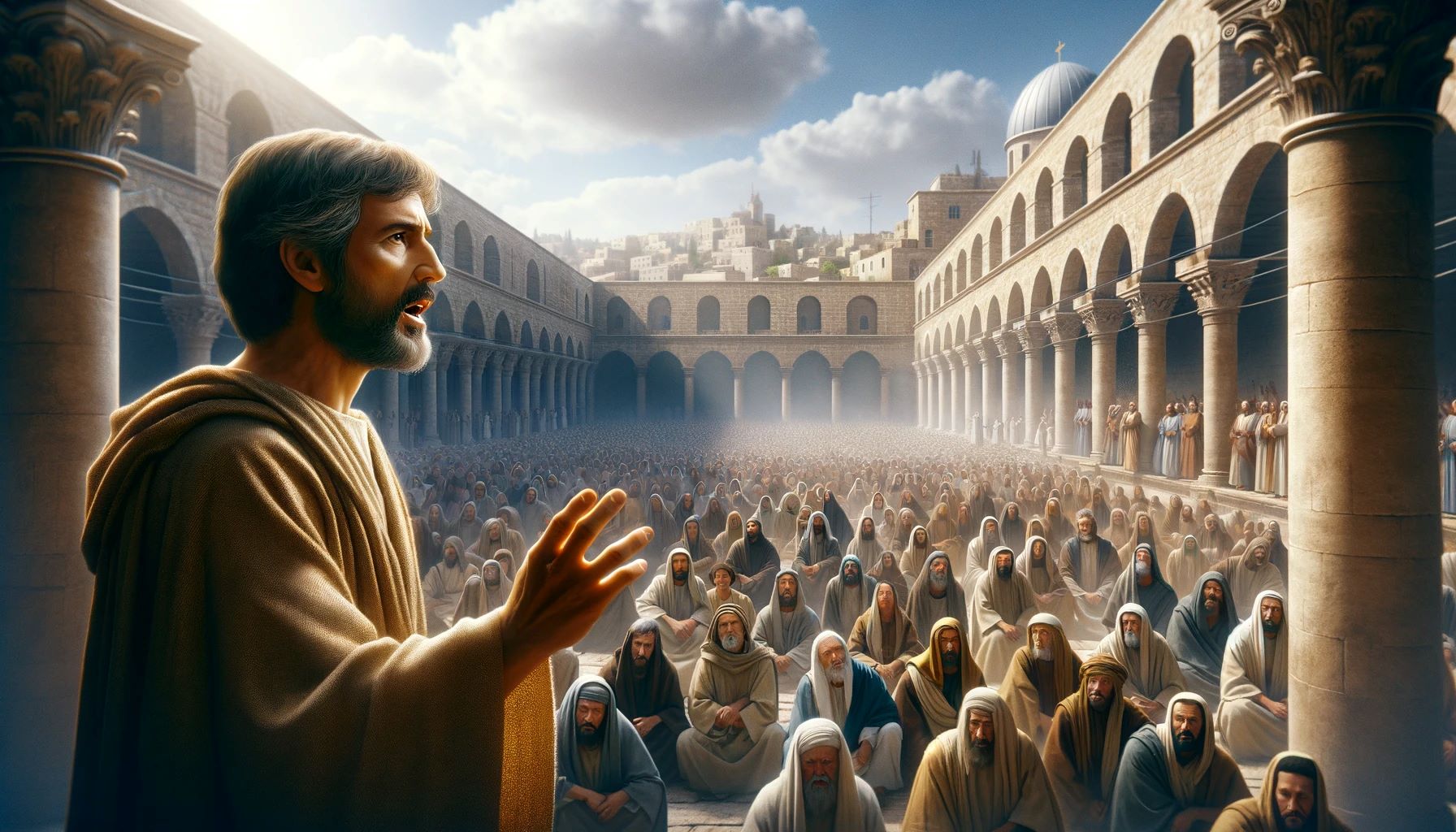Home>Arts and Culture>What Happened To The Basilica During The Byzantine Era
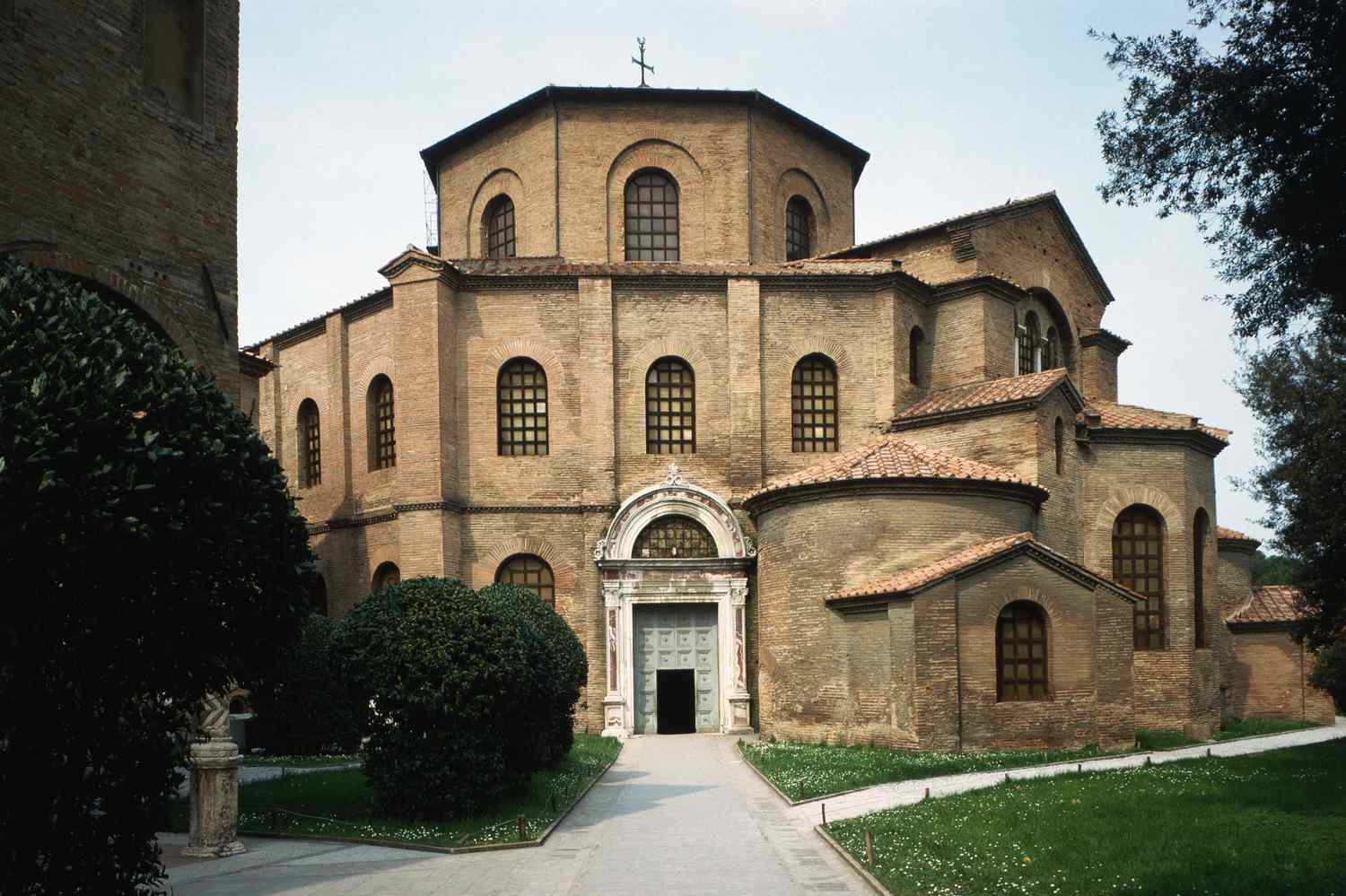

Arts and Culture
What Happened To The Basilica During The Byzantine Era
Published: February 10, 2024
Peter Smith, Editorial Director at Christian.net, combines deep insights into faith, politics, and culture to lead content creation that resonates widely. Awarded for his contributions to religious discourse, he previously headed a major organization for religious communicators, enhancing dialogue on faith's societal impacts.
Discover the impact of the Byzantine era on the basilica's art and culture. Uncover the transformations and influences that shaped its historical significance.
(Many of the links in this article redirect to a specific reviewed product. Your purchase of these products through affiliate links helps to generate commission for Christian.net, at no extra cost. Learn more)
Table of Contents
Introduction
The Byzantine Empire, renowned for its rich cultural heritage and architectural marvels, left an indelible mark on history. Among the many architectural wonders that emerged during this era, basilicas stand out as iconic symbols of Byzantine art and culture. These grand structures, characterized by their imposing domes and intricate mosaics, served as centers of religious and communal life, reflecting the empire's deep-rooted traditions and evolving societal dynamics.
As we delve into the world of Byzantine basilicas, we embark on a journey through time, exploring the construction, significance, and enduring legacy of these majestic edifices. From the bustling streets of Constantinople to the remote corners of the empire, basilicas stood as testaments to the Byzantine people's unwavering faith and artistic prowess.
Join us as we unravel the mysteries and marvels of basilicas in the Byzantine era, gaining insight into their architectural splendor and cultural significance. Through this exploration, we aim to gain a deeper understanding of how these monumental structures shaped the fabric of Byzantine society and continue to inspire awe and admiration in the modern world.
Read more: What Happens During Baptism
The Construction of Basilicas in the Byzantine Era
The construction of basilicas in the Byzantine era was a testament to the empire's architectural ingenuity and unwavering devotion to Christianity. These grand structures, characterized by their distinctive features such as vast open spaces, towering columns, and awe-inspiring domes, were meticulously designed to evoke a sense of divine splendor and spiritual transcendence.
At the heart of basilica construction lay a profound reverence for religious symbolism and communal gathering. Architects and artisans meticulously crafted these edifices to reflect the Byzantine Empire's deep-rooted Christian faith and its role as the epicenter of Eastern Orthodox Christianity. The layout of basilicas typically featured a longitudinal plan with a central nave flanked by aisles, culminating in a semicircular apse at one end. This design not only facilitated large congregations but also emphasized the hierarchical nature of Byzantine religious ceremonies, with the clergy presiding from the elevated apse.
The construction process itself was a labor of love, with skilled craftsmen and laborers working tirelessly to bring the grand vision of basilicas to life. From quarrying stone and carving intricate marble reliefs to meticulously laying mosaic tesserae, every aspect of basilica construction was a testament to the Byzantine Empire's commitment to architectural excellence. The use of innovative building techniques, such as the incorporation of pendentives to support the weight of the dome, showcased the empire's engineering prowess and its ability to push the boundaries of architectural innovation.
Furthermore, the opulent decoration of basilicas with vibrant mosaics, ornate frescoes, and gilded embellishments exemplified the Byzantine Empire's penchant for artistic grandeur. These lavish adornments not only served as visual expressions of religious devotion but also conveyed the empire's wealth and cultural sophistication to all who beheld these magnificent structures.
In essence, the construction of basilicas in the Byzantine era was a multifaceted endeavor that seamlessly blended architectural mastery, religious symbolism, and artistic opulence. These monumental edifices stood as enduring testaments to the empire's unwavering commitment to Christianity and its unparalleled contributions to the world of architecture and design.
The Role of Basilicas in Byzantine Society
Basilicas played a pivotal role in shaping the social, religious, and cultural landscape of the Byzantine Empire. As architectural marvels that transcended mere physical structures, these grand edifices served as vibrant hubs of communal life, spiritual devotion, and imperial grandeur.
At the heart of Byzantine society, basilicas stood as symbols of religious sanctity and communal unity. They were not merely places of worship but also served as centers for a myriad of social and civic activities. From religious ceremonies and processions to public gatherings and administrative functions, basilicas were the focal points of communal life, fostering a sense of collective identity and shared purpose among the Byzantine populace.
Moreover, basilicas played a crucial role in reinforcing the authority and prestige of the Byzantine emperors and the Orthodox Church. The opulent decoration and grandeur of these structures served as tangible expressions of imperial power and divine favor, solidifying the intertwined relationship between the state and the church. The strategic placement of basilicas within the urban fabric of cities such as Constantinople underscored their significance as symbols of imperial piety and political authority.
Furthermore, the religious significance of basilicas extended beyond their function as places of worship. They served as repositories of sacred relics, icons, and religious artifacts, drawing pilgrims and devout worshippers from far and wide. The veneration of these holy sites not only bolstered the spiritual fervor of the Byzantine people but also contributed to the economic prosperity of the regions where basilicas were located.
In essence, basilicas were the beating heart of Byzantine society, serving as architectural embodiments of religious devotion, communal solidarity, and imperial splendor. Their multifaceted roles as centers of worship, social gatherings, and political symbolism underscored their profound impact on the fabric of Byzantine life, leaving an enduring legacy that continues to captivate and inspire admirers of art, history, and culture worldwide.
Changes to Basilicas During the Byzantine Era
The Byzantine era witnessed a remarkable evolution in the architectural and artistic elements of basilicas, reflecting the empire's shifting cultural, religious, and political dynamics. These changes, spanning from structural modifications to decorative enhancements, reshaped the very essence of basilicas, leaving an indelible mark on their legacy.
One of the most notable transformations during this era was the refinement of dome construction techniques. Byzantine architects, inspired by the grandeur of the Hagia Sophia, sought to elevate the domes of basilicas to unprecedented heights. This led to the development of innovative architectural solutions, such as the implementation of squinches and pendentives, which enabled the creation of larger, more imposing domes. The soaring domes became iconic features of Byzantine basilicas, symbolizing the empire's aspirations for celestial magnificence and divine transcendence.
Furthermore, the decorative elements of basilicas underwent a profound metamorphosis during the Byzantine era. Elaborate mosaics, characterized by intricate geometric patterns and vibrant depictions of religious motifs, became ubiquitous adornments within these sacred spaces. The use of gold tesserae in mosaic compositions, coupled with the incorporation of shimmering glass and precious stones, imbued basilicas with an ethereal radiance, evoking a sense of heavenly splendor within their hallowed walls.
In addition to architectural and decorative innovations, the function of basilicas evolved to accommodate the changing religious practices and ceremonial rituals of the Byzantine Empire. The introduction of the iconostasis, a partition adorned with religious icons separating the nave from the sanctuary, became a defining feature of Byzantine basilicas. This architectural element not only delineated the sacred space reserved for clergy but also served as a focal point for the veneration of icons, reflecting the empire's deepening devotion to religious imagery and symbolism.
Moreover, the spatial organization of basilicas underwent significant modifications to accommodate the elaborate liturgical processions and hierarchical rituals of the Byzantine Orthodox Church. The addition of side chapels, the expansion of the apse, and the incorporation of intricately carved marble ambo platforms exemplified the empire's commitment to enhancing the ceremonial grandeur and spiritual significance of basilicas.
In essence, the changes to basilicas during the Byzantine era epitomized the empire's relentless pursuit of architectural innovation, religious expression, and cultural refinement. These monumental shifts not only redefined the physical attributes of basilicas but also underscored their enduring significance as embodiments of Byzantine artistry and spiritual devotion.
The Legacy of Basilicas in the Byzantine Empire
The legacy of basilicas in the Byzantine Empire transcends the confines of architectural magnificence, echoing through the annals of history as enduring testaments to the empire's cultural, religious, and artistic prowess. These grand edifices, with their soaring domes, resplendent mosaics, and profound spiritual significance, left an indelible mark on the fabric of Byzantine society, shaping the collective consciousness of generations and inspiring awe and admiration to this day.
At the heart of their legacy lies the profound impact of basilicas as architectural marvels that embodied the Byzantine Empire's unwavering commitment to Christianity and artistic excellence. The innovative construction techniques, such as the use of pendentives and squinches to support monumental domes, set new standards for architectural ingenuity and engineering prowess, influencing the development of religious and secular structures for centuries to come.
Moreover, the legacy of basilicas extends beyond their physical attributes, encompassing their pivotal role as centers of communal life, religious devotion, and imperial grandeur. These sacred spaces served as vibrant hubs where the Byzantine populace congregated for religious ceremonies, social gatherings, and administrative functions, fostering a sense of collective identity and shared purpose. The opulent decoration and strategic placement of basilicas within urban landscapes also underscored their significance as symbols of imperial piety and political authority, leaving an indelible imprint on the socio-political tapestry of the empire.
Furthermore, the enduring legacy of basilicas is intricately intertwined with their role as repositories of religious relics, icons, and sacred artifacts, drawing pilgrims and devout worshippers from far and wide. The veneration of these holy sites not only bolstered the spiritual fervor of the Byzantine people but also contributed to the economic prosperity of the regions where basilicas were located, leaving a lasting imprint on the cultural and economic landscape of the empire.
In essence, the legacy of basilicas in the Byzantine Empire transcends the boundaries of time and space, standing as enduring symbols of architectural grandeur, religious devotion, and cultural refinement. Their legacy continues to captivate and inspire admirers of art, history, and architecture, serving as poignant reminders of the empire's unparalleled contributions to the world of art and culture.





